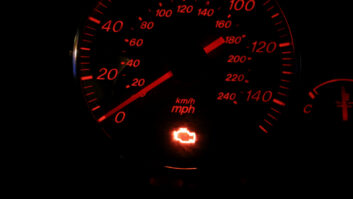In these letters to the editor, readers comment on the story “When It Comes to AM in Cars, Let the Consumer Decide,” in which Rob Atkinson suggested that maybe the AM Radio for Every Vehicle Act should be amended. Comment on this or any article. Email [email protected].
What if There’s a Solar Flare?
While I like Rob’s idea in concept, I have to say it undermines the real issues involved. Yes, if AM were required as an option, consumers that listen to AM regularly would choose to have it. Case closed, right?
Wrong. The problem with that theory are the people that do not listen to AM regularly and who therefore might opt-out. The Federal Government wisely considers scenarios bordering on doomsday. These include a solar flare that could knock out any number of pieces of critical infrastructure (not just communications but the power grid as well).
Large enough solar flares happen frequently — we are dependent on chance (or luck, if you prefer) that they haven’t aligned properly with earth’s orbital position to cause a second Carrington Event. That happened in 1859 and it was big enough to wipe out the telegraph network, a technology far more robust than most of today’s infrastructure.
Or a major cyber attack. Hardly a month goes by that I don’t see another report of deliberate cyber intrusions on our critical infrastructure that seem structured as preparation for future attacks.
When one considers the amount of damage an electromagnetic pulse from even a single small nuclear bomb can do, one can imagine something far short of an all-out nuclear war causing major disruptions too.
The common thread here are events where wide-scale critical infrastructure damage leaves citizens without power and communications for days or longer. The National Public Warning System (the core Federal portion of the Emergency Alert System) was designed for such events. And it relies primarily on AM as by far the most cost-effective way to reach 90% of our population. While it could be replaced with another technology, the alternatives would require several orders of magnitude greater expenditure. AM would even sound better under these circumstances as sources of interference would go dark.
It is under these scenarios that folks that do not listen to AM will gratefully discover it, and will be pleasantly surprised to hear it deliver information, hope and advice to the public during the crisis. My point is, they won’t know they need it until they need it desperately.
Atkinson is not the only one unaware of this big picture necessity for AM. The auto industry lobbyists arguments seem devoid of these basic facts.
— Rolf Taylor, Rocket Engineering and Consulting
What if There’s a Nuclear Attack?
Rob Atkinson seems to think that EV cars can be manufactured with an AM radio option. I think if you ask the manufacturers, they’ll tell you that either the vehicle power train is designed to reduce the amount of AM noise to an acceptable level for an on-board AM receiver or not. So that decision will be made at the manufacturing level, not at the dealer. This is one reason why the current AM legislation is making its way through Congress.
The other reason may not be well-known to even most radio people, but I’ve discovered in the past few years that FEMA has invested a lot of money in hardening certain high-power, clear-channel AM sites. They have their own transmitter and studio equipment in hardened structures, their own backup power and programming sources. The point of this is to provide basic, last-minute information to the public over as wide an area as possible for each station.
After a nuclear attack, it will be critical for the surviving public to have some idea of what to do next, because the power will be off in every impacted market and there won’t be any cellular or internet service. If you survived and don’t have a shelter at your home or office, you’ll want to know where to go to shelter from the fallout, for example.
That’s what this is really about, protecting that system. For it to work, you need a functional AM receiver in your vehicle.
— Gary O. Keener, San Antonio, Texas




